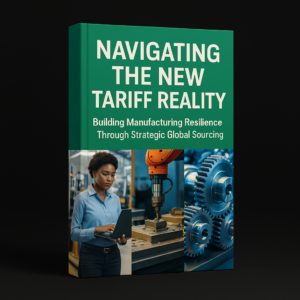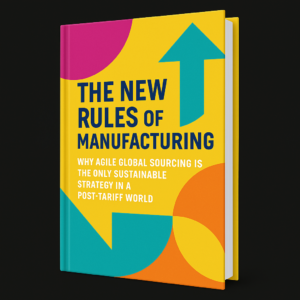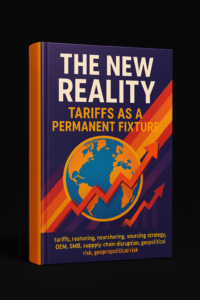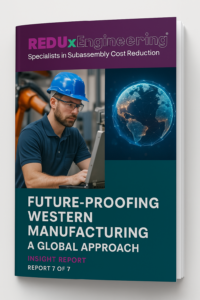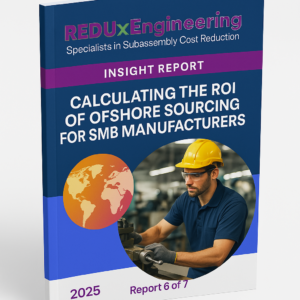
The Cost of Inaction
In manufacturing, timing can be everything. Opportunities to reduce cost and improve efficiency often have a window – and missing that window can mean leaving significant money on the table. This brief focuses on the urgency factor: why acting sooner rather than later on cost optimization yields greater rewards, and how scarcity of resources (both internal and external) can impact your ability to execute improvements. We’ll also discuss the competitive implications of timing, essentially asking: what happens if your competitors seize an opportunity before you do?
One way to quantify the cost of inaction is to consider a simple example: say there’s an initiative that could save your company $50,000 per month in production costs. Delaying by 6 months essentially “costs” you $300,000 in lost savings. That’s money that could have been strengthening your margins or reallocated to R&D, marketing, etc. We often encourage clients to frame decisions in these terms – not “can this wait?” but “what is it costing us to wait?”
Windows of Opportunity in Supply Chains
It’s important to recognize that some opportunities are transient. For instance, right now (as of 2025) we’re seeing a very favorable condition for exploring offshore sourcing:
- Shipping Costs Have Plummeted: Global container freight rates, which spiked to record highs in 2021, have come back down to earth. As of early 2025, ocean shipping rates are nearly 80% lower than their peak in 2021. This dramatically improves the economics of importing parts. Companies that locked in offshore suppliers now are enjoying freight costs not seen in years, whereas if you had tried two years ago, expensive logistics might have eaten your savings. This shipping cost trough may not last forever (already, some volatility is returning), so acting while it’s low is key.
- Offshore Capacity is Available (For Now): As some manufacturers temporarily shifted production back to North America, offshore factories in places like China, Vietnam, and Mexico actually experienced capacity slack. Paradoxically, the reshoring trend created an opportunity for others: top-tier overseas suppliers became more eager for new business and offered very competitive pricing and terms to fill their lines. REDUx observed this first-hand – we secured priority production slots for clients because our partners had space. However, this window can close quickly if the pendulum swings back or if those suppliers fill up with other work. There’s a first-mover advantage in locking in a great supplier before they become too busy again.
- Internal Bandwidth: On the home front, many companies have budget cycles or slow seasons that are ideal for undertaking improvement projects. If you know Q2 is typically a lull in production, that might be the best time to devote engineering resources to cost reduction efforts. Wait until Q4 when orders peak, and you might not have the bandwidth to support a project. We often advise: use the quiet times to prepare for the busy times. There is a real scarcity of engineering and managerial attention – catching a breather in that schedule can be golden for making lasting improvements.
Scarcity of Expertise
Another aspect of scarcity is the availability of expert help. Whether it’s your internal experts or external partners like REDUx, these resources are not unlimited. For example, our team takes on a limited number of projects concurrently, to maintain focus and quality. If you approach us (or any reputable firm) at a time when we’re booked solid, you might have to wait in queue. The same can be said for internal Six Sigma or cost-down teams – they likely juggle multiple initiatives and may only slot new projects at quarter or year boundaries.
The takeaway is, if you identify a high-impact opportunity, it pays to secure the needed resources early. This ensures you’re not stuck waiting while costs continue to accumulate. We practice what we preach: we let prospective clients know when our slate is nearly full because we understand the frustration of delay and want to set realistic expectations.
Competitive Dynamics – Be the Early Mover
In competitive industries, acting quickly on efficiency improvements can translate to market advantage. A study by Deloitte in 2023 found that companies which aggressively pursued cost transformation during supply chain disruptions ended up with double the EBITDA growth of those that took a “wait and see” approach. The logic is straightforward – if you lower your cost base months or years before your rivals, you have more pricing flexibility and profit per unit in the interim. You can choose to lower prices to gain market share, or enjoy higher margins (fueling reinvestment or cushioning you in price wars).
There’s also a defensive aspect: if everyone in your sector is optimizing and you are late to the game, you could be caught flat-footed with higher costs. One executive quipped, “If you’re not tightening your belt, you’re funding your competitor’s war chest.” It’s a bit dramatic, but in essence by not saving where you could, you’re allowing competitors who do save to potentially outspend or underprice you elsewhere.
Additionally, early movers often get preferential relationships with the best suppliers. For instance, if there’s a highly sought-after specialist manufacturer overseas, the first company to partner with them in your niche might secure their capacity and A-team attention. Latecomers might get second priority or even be locked out if that supplier says “we’ve already got enough work.” We see this in electronics manufacturing frequently – those who acted early to secure capacity for, say, semiconductor assembly in a tight market were the only ones shipping product on time.
Avoiding the “Fear of Missing Out” Trap Ethically
While urgency is important, we also caution against making rash decisions purely out of FOMO (fear of missing out). It’s about informed urgency. That means:
- Do due diligence quickly, but do it thoroughly. (We help by fast-tracking the feasibility analysis so you know an opportunity is real.)
- Set clear decision points. For example, “If by end of this quarter we validate 20% savings, we will proceed with supplier change; if not, we won’t.” This prevents analysis paralysis but also guards against jumping in without verification.
- Ensure alignment internally that pursuing this now is a priority. Nothing is worse than rushing to start a project and then not giving it the internal support it needs to succeed in the given timeframe.
At REDUx, we incorporate this principle by giving potential clients a frank assessment: if we think the window is hot, we’ll say so and explain why (as we did above with shipping rates data, etc.). If we think a project can wait without detriment, we’ll be honest about that too. Scarcity tactics only work if they’re genuine – our reputation is too important to fake urgency.
Conclusion
In summary, time is money in manufacturing. Seizing cost-saving opportunities promptly can result in compounded benefits, while delaying can incur significant opportunity costs and competitive disadvantages. Whether it’s leveraging the current global supply climate or simply beating competitors to a leaner cost structure, acting decisively can put your company ahead of the curve.
That said, the goal isn’t to rush blindly – it’s to act swiftly and smartly. By recognizing real windows of opportunity (and the real limitations if you wait), you can make informed decisions about when to kick off initiatives. REDUx Engineering encourages manufacturers to evaluate the potential upside of action now versus later. In many cases, the analysis comes back clearly in favor of now. And when that’s the case, we’re here to help ensure that timely action translates into tangible results.
Making it Safe, Flexible and Successful:
REDUxEngineering can be your “Managed Offshore Sourcing” department, providing SMB manufacturers the on-demand specialized expertise, pre-vetted CM partners. multiple international destinations, language skills, long-term regional relationships and on-site QA staff needed to safely, efficiently, and quickly tap into the savings that diversified global sourcing has delivered to multi-nationals for decades. Hop on our calendar for a 20 minute briefing: https://app.apollo.io/#/meet/david_orton_b36 , or email us with times that work for you: [email protected].
Bibliography (Strategy Paper 5):
- Drewry Shipping Index – World Container Index Update, April 2025. – Reports global container freight rates ~79% below 2021 peak levels, indicating current low shipping cost environment beneficial for importers.
- Reshoring Initiative – 2024 Q1 Report. – Observes that a surge in reshoring had led to domestic capacity constraints, while some offshore suppliers had excess capacity (creating an opportunity for other firms to secure production slots).
- Deloitte – “Thriving in Disruption: Supply Chain Cost Optimization” (2023) – Found companies that accelerated cost-saving measures during recent supply chain disruptions achieved ~2x higher EBITDA growth than slower movers (statistic referenced in text).
- Bloomberg News – “Manufacturers Rush to Lock In Suppliers as Costs Shift” (2024) – Business report highlighting how early movers in shifting supply sources gained preferential treatment and better pricing, citing examples in automotive and electronics industries.
- Freightos – Freightos Baltic Index Data. (2025) – Online database showing historical container freight rate trends, confirming significant drop in 2023–2024 and gradual normalization in 2025.
- Gartner – “2025 Supply Chain Planning Guide.” – Recommends that companies undertake cost optimization projects during periods of slack demand to avoid resource bottlenecks internally; includes case study of a manufacturer that saved 8% COGS by acting during a market lull.

